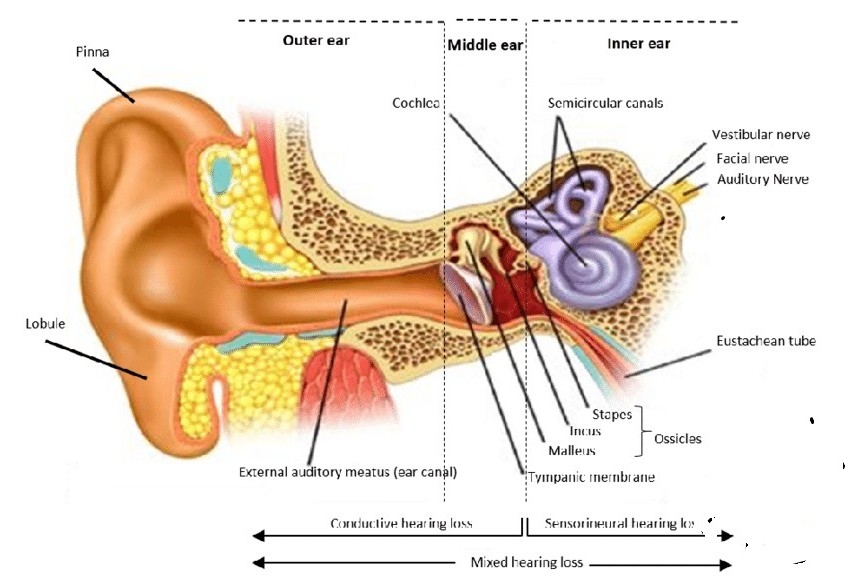HOW WE HEAR
I wish to thank Miss Tara for inviting me to write this article for our newsletter.
Hearing is one of our most important senses. If a child is born with severe hearing loss, then he will not be able to develop speech and language. They may need to go to special schools. A Cochlear Implant, which involves expensive surgery, may be useful only for some.
When Helen Keller, who became hearing impaired and blind at a young age, was asked which was of more important; her hearing disability or her blindness. This was what she said; “The problems of deafness are deeper and more complex, if not more important, than those of blindness. Deafness is a much worse misfortune. For it means the loss of the most vital stimulus – the sound of the voice that brings language, sets thoughts astir and keeps us in the intellectual company of man.”
Approximately 10% of most populations in the world, will have some form of hearing loss. This is a significant number. Unfortunately, many go about without realizing this. When we are over 70 years, most of us begin to have some degree of hearing loss. This form is called Presbyacusis.
HOW DOES IT WORK?
It will be good to look at the anatomy and physiology of the ear to understand this.

The Outer ear consists of the Pinna and the ear canal. The Middle ear comprises of the eardrum and an air-filled cavity containing 3 small bones, that are in continuity and the first bone being attached to the eardrum. The other prerequisite for proper hearing is a patent Eustachian Tube that connects this cavity to the back of the nose.
Sound waves are drawn into the ear canal by the Pinna. This then causes the eardrum to vibrate, which in turn sets the 3 little bones to also vibrate. This will transmit to fluids in the Inner ear. The Inner ear is made of a two and a half turn, spiral tube, called the Cochlear. The Cochlear has thousands of hair cells arranged spirally, which will pick up sounds of different frequencies and in turn transmit it via the Cochlear nerve to the Hearing Centre in the Brain. Here it is processed and a definite response can then be made. The whole process is much more complex and amazing.
Also, along with hearing, the ear contains the Semicircular Canals, which is the Organ of Balance. Here, 3 tubes, arranged in a amazing fashion so that the fluid in the tubes can pick up movements of the head and body and make adjustments in our muscle and joints to prevent us from losing our balance when we move.
Hearing will depend on all these parts of our auditory system functioning properly. If any of these parts malfunction, then we get a hearing loss. In the case of problems in the Organ of Balance, we get dizziness or vertigo.
Hearing Loss can be divided into 3 types:
- If there is a problem with conduction of sound waves in the Outer or middle Ear, we get Conductive Deafness
- If there is a problem with the Cochlear, the Cochlear Nerve or the hearing Centre in the Brain, then we get Sensorineural Deafness.
- If there is both Conductive and Sensorineural loss, then we refer to it as Mixed Type Hearing Loss.
The diagnosis can be made by the ENT Surgeon by medical examination and with Audiological Tests.
The treatment will depend on the type of loss and the severity. It could be treated with medicines, surgery or the use of Hearing Aids.
As a generalization, Conductive Hearing Loss can be treated with medicines and/or Surgery. Sensorineural Hearing Loss more often is not amenable to surgery. We may need to prescribe Hearing Aids. Today, Hearing Aids use digital technology and are very useful. We need a professional Audiologist to get the best Aid. There are different types of hearing aids and can be very expensive.
There seem to be stigma against wearing Hearing Aids. We need to educate patients against this bias and tell them that modern Hearing Aids are very effective. I usually tell them to go and try them as there is no compulsion that they must buy it. When they experience improved hearing, then they may be motivated to buy it.
I hope this article has helped you understand how the ear works and the problems people can experience.
By Dr K A Abraham
